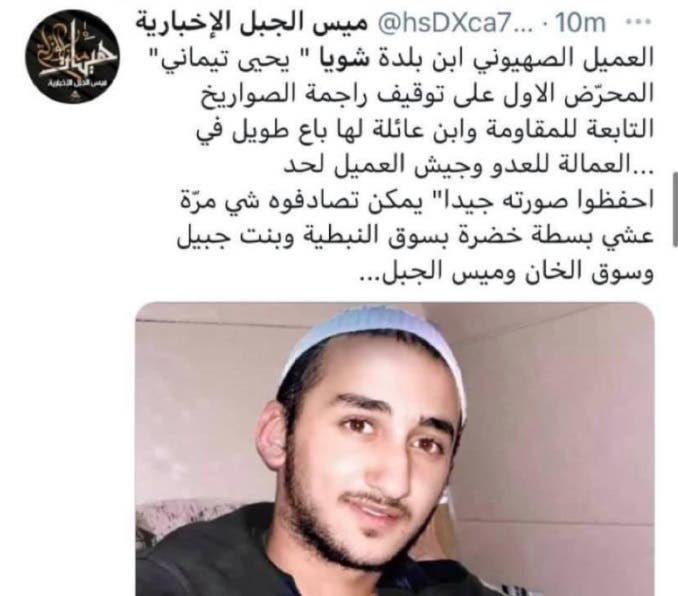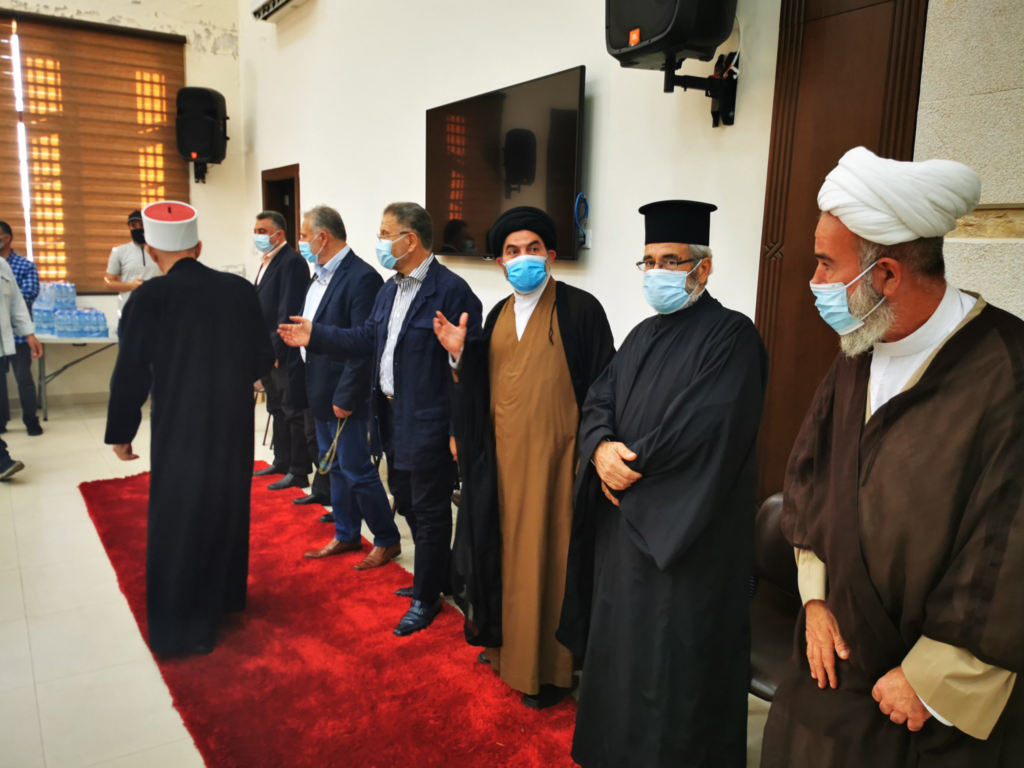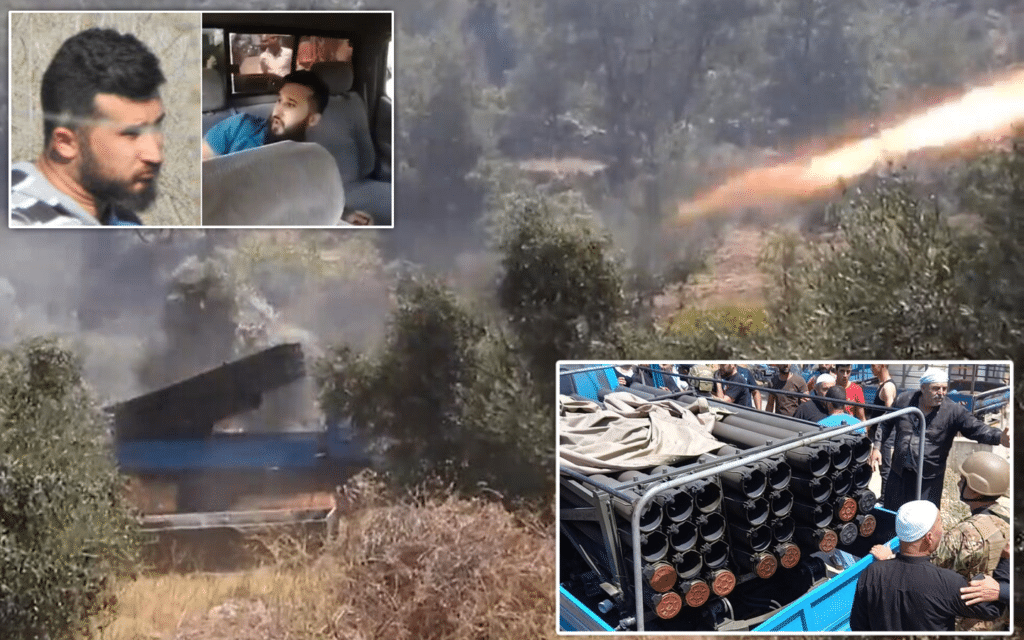On August 6th, Hezbollah fired rockets towards Israel, taking responsibility for this act of terror for the first time in 15 years. Much was published regarding the reasons for this attack, with regards to Iran on the larger scale and Hezbollah on the local scale (who executed this attack to send a message to the Lebanese people that it alone controls southern Lebanon).
The barrage was echoed throughout many social media platforms and in the field in Lebanon, reviving many old conflicts between different social groups in Lebanon – Hezbollah’s supporters and opposers.
Hezbollah decided to launch the rockets in broad daylight from areas belonging to Lebanon’s Druze population, however, the Druze residents of the area claimed that they were intentionally launched from within their area in order to endanger them in a possible future Israeli retaliation.
Hezbollah made a tactical error when planning the attack – the Hezbollah operatives’ (that launched the rockets with the multi-barrel launcher) escape route was not plotted appropriately, taking them through the Druze village Chouya. The village’s residents who heard the rocket fire from the orchards adjacent to the launch site were likely prepared, and so were able to intercept the Hezbollah operatives and the launcher, filming the operatives terrified faces and posting the footage on social media while alerting the LAF. The latter later arrived at the scene to arrest them.
The footage of the frightened Hezbollah operative in the pickup truck placed Hezbollah in an uncomfortable position, revealing to the world that the even the local populace dislikes its activity, undermining the very message Hezbollah wanted to convey in the first place – that it alone controls the area.
It is essential to explain that the Druze population in Lebanon is divided into two groups – those who support and those who oppose Hezbollah. In the southern Lebanon area reside Hezbollah’s opposers (i.e., the Druze population mentioned above) who claim that Hezbollah is fighting Israel at their expense, to which Hezbollah counters by blaming them for many years of consorting with the enemy (Israel). Friday’s incident intensified the dispute between the two sides: Hezbollah supporters incited a social media campaign against the Druze residents involved by uploading posts on social media exposing their names. And accusing them of thwarting the Resistance’s activity. Yahia Teimani, one of the youngsters involved in the incident, was called a “Zionist traitor”.

Hezbollah intentionally launched the rockets outside UNIFIL’s jurisdiction area in Lebanon, also assessing that the LAF will not hasten to arrest the Hezbollah operatives. However, since the Druze residents of the village “Chouya” intercepted them, the LAF was left with no choice on the matter and was forced to arrest them and confiscate the rocket launcher and the leftover rockets. However, the rocket launcher was spotted on the road later that evening making its way back to Hezbollah.
What’s more – the operatives were released from custody. One of them, Ali Kajak, who was filmed being humiliated by the Druze residents of the village, was given the red carpet upon returning to his village, located 10 miles from the launch site.
The incident did not end here. By driving Druze merchants out of markets in Lebanon’s major cities, Hezbollah operatives avenged their comrades and made it clear to the Druze that undermining the Resistance has a price. The following video shows Hezbollah operatives driving Druze merchants of a market in the Sidon. This was intentionally filmed by Hezbollah to dissuade others in Lebanon from acting similarly in the future.
The event did not conclude only with clashes between the Druze and Hezbollah operatives. The Lebanese media was rife with criticism of Hezbollah just for launching the rockets, not even for their actions against the Druze. The Maronite Catholic Patriarchate of Antioch said: “We are tired of the wars, the bloodshed, the destruction and the displacement from our homes… Hezbollah, an entity separate from Lebanon’s governmental institutions, cannot be the one to decide whether Lebanon will be at peace or at war.”
Ultimately, the greatest fear of the Lebanese leadership from all religious sects is the escalation to civil war.
In the following days, all the Lebanese leaders urged people to calm things down: the Chouya village council condemned their residents’ attack of the Hezbollah operatives and emphasized its support of Hezbollah. Walid Jumblatt, Lebanon’s leading Druze politician, urged calm after the incident, writing on Twitter: “We hope that we all exit this tense atmosphere on social media.”
The leaders of the religious sects in southern Lebanon – Druze, Christian, and Shiite all – hosted an assembly of reconciliation.

It is uncertain whether these efforts will prevent the next clash between Druze youngsters and Hezbollah operatives. Bottom line – this entire incident teaches us several things about Lebanon: first, while Hezbollah is growing stronger, there are areas in Lebanon it will be unable to enter. Second, the LAF is not interested in confronting Hezbollah and hence does not act against its military wing. This should be taken into consideration when discussing the question of who will take control over Lebanon.






